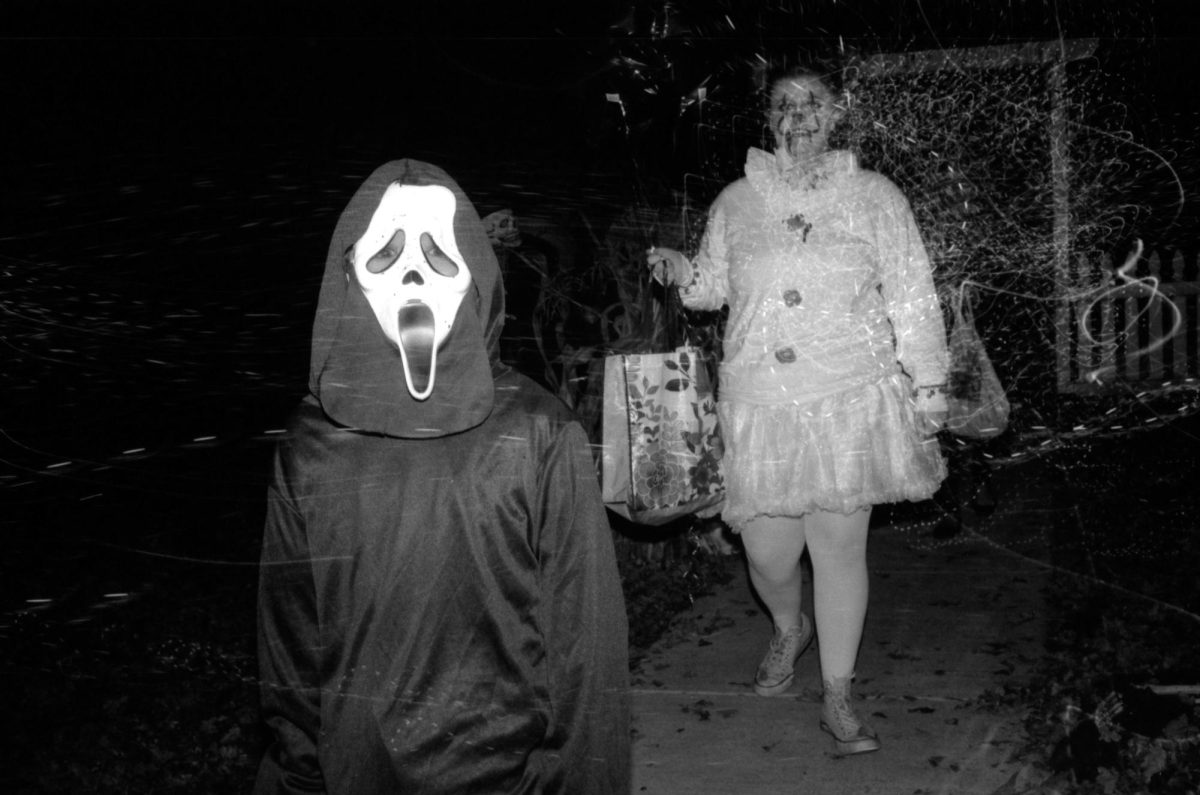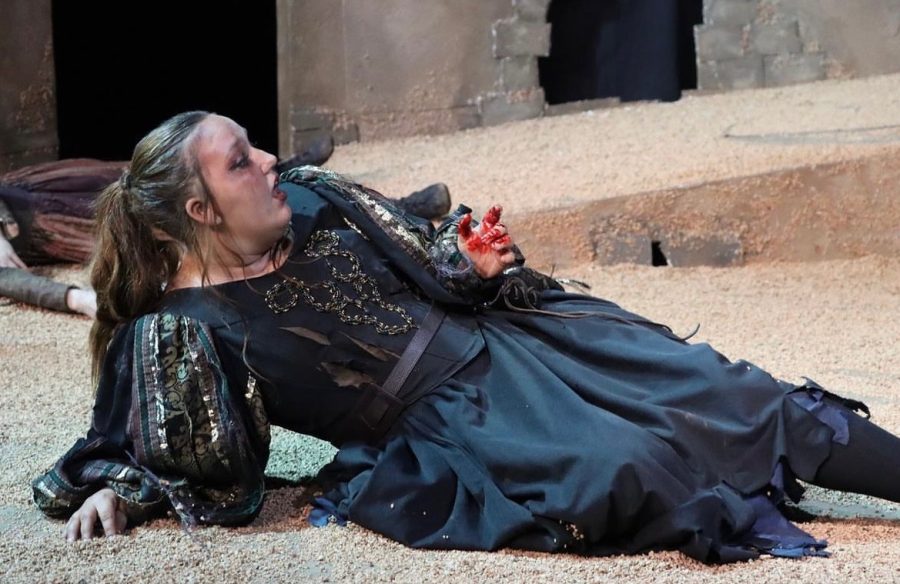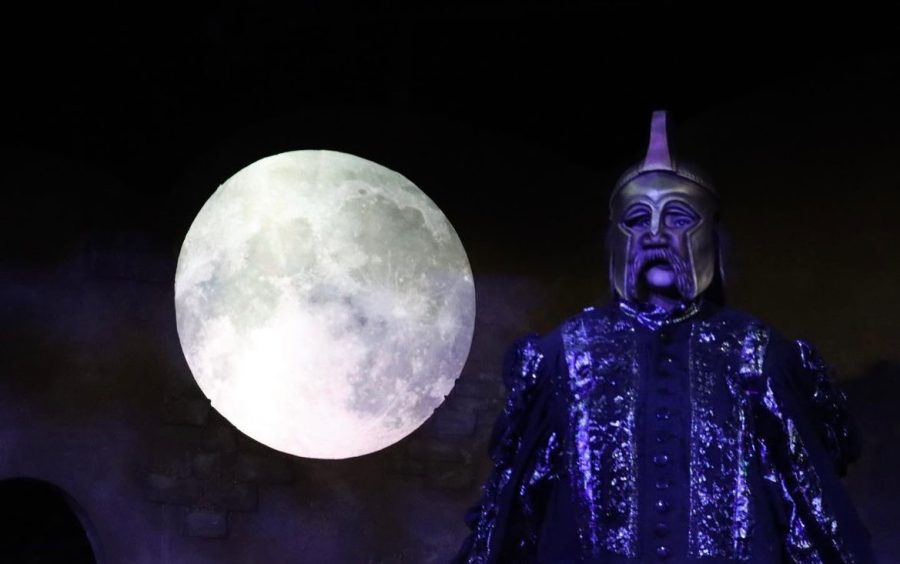FGCU Theatre Puts a Spin on “Hamlet” with Gender-Blind Casting and Creative Costuming
Theatre students debuted “Hamlet” with a gender-blind cast. Photo courtesy of FGCU’s theatre Instagram.
April 25, 2023
Centuries removed from Old English and William Shakespeare’s writings, “Hamlet” remains a frequently performed play. A play of its age can be difficult for modern audiences to understand and relate to, but FGCU’s theatre program has all bases covered in terms of ethos and creative additions to the original play, most notably gender-blind casting.
Hamlet, the son of the murdered King of Denmark, is told by his father’s ghost to seek revenge for his death by killing his uncle, Claudius. The play follows Hamlet as he falls into performed insanity while seeking revenge, and ends in every character except for Horatio, a friend of Hamlet, dying.
In FGCU’s production, however, there are few “hes” or “hims.” All characters except for Claudius are played by women, a major change considering that “Hamlet” only has two female characters. Roles gender-blindly casted are not women playing men, but women playing women.
“Us having females play males enhances the show even more and translates the language in a specific way because so many characters are women,” theatre sophomore and actress of Hamlet, Tatum Bates said. “I think it’s incredibly cool how so many of the lines now have a different meaning, and how some of the relationships can be viewed now.”
Bates used the relationship between Hamlet and Ophelia, his premodern situationship, as an example of how both characters being women changed the show. Hamlet is very forward with Ophelia about his feelings, both positive and negative, towards Ophelia, which can be attributed to the flip-floppiness of fictional teenage boys. Though in this production, Hamlet’s desperation and lack of a grip on reality are emphasized by her forwardness with Ophelia, as her actions are not period— or gender-typical for a woman interacting with another woman.
While the gender-blind casting makes the show different from most productions of “Hamlet,” it wasn’t intentional. Very few men auditioned to begin with, but director Barry Cavin was not phased, and rolled with the change.
“It’s going to be interesting for the audience members to find value in the casting,” Cavin said prior to the show’s opening. “To be honest, I look at ‘Hamlet’ as a story, and the gender issues are not important to me for this story. For me, as an audience member, I’m not taking anything away from that aspect of it, but I know that will be a lot more meaningful for other people. And I’m really happy about that.”
In addition to the unique casting, Cavin added other creative emphases to the production to break away from the norm. The actors have been performing the play every day for 400 years, close to the amount of time since the show’s original writing, which reflects in the appearance of the costumes and the physical setting. A projector is used at the beginning of the play to show Hamlet reading a poem, providing the illusion that the audience is watching a play within a play.
“That was essentially Barry’s idea. He based our entire world around that idea,” theatre junior and actress of Horatio, Alexandra Adams said. “Our scenic designer put little pieces of cork on our set. It’s so beautiful and shows the age. He’s having us do our makeup to look dirty by having us put dirt everywhere, like on our face, neck, and ears. Our costumes are all tattered and distressed, and that really shows the age.”
Despite the age of “Hamlet” as a production, players of the FGCU production and Shakespeare enthusiasts still see its value.
Cavin said that he learned to appreciate Shakespeare while in grad school. He had a professor, world renowned Shakespearean scholar Robert Wiemann, who emphasized how folk traditions, the cultural elements of specific groups, influenced Shakespeare. Wiemann’s teachings grew Cavin’s interest in directing Shakespeare.
“Trying to decide ‘am I to do something’ is something everyone goes through, no matter the time in history, no matter what’s happening in the world, and decision making is a major part of ‘Hamlet,’” Cavin said. “We all know that every decision that we make results in a reality that we have to make more decisions in. I think this theme is super relevant due to the virtual nature of our world with the existence of social media, which presents a whole new plane for making choices.”


































